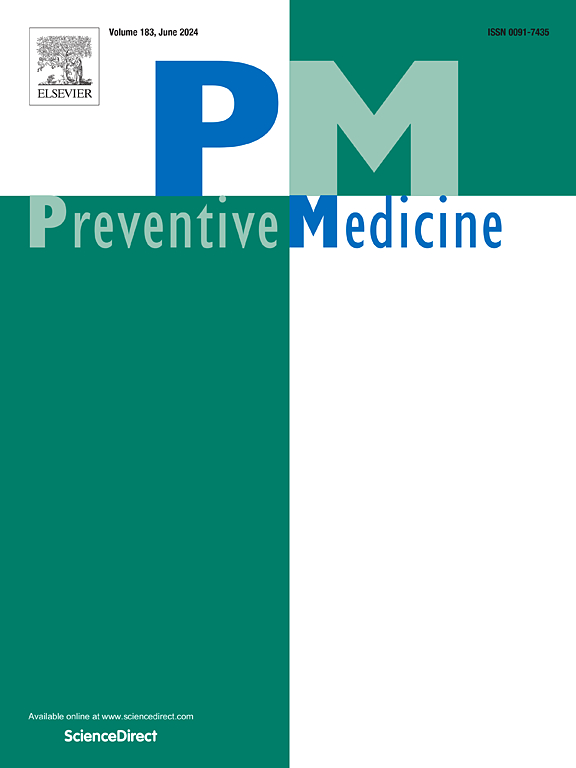Food insufficiency and difficulty affording expenses after the end of Supplemental Nutrition Assistance Program emergency allotments in the United States among households with and without children
IF 3.2
2区 医学
Q1 MEDICINE, GENERAL & INTERNAL
引用次数: 0
Abstract
Objective
Emergency allotments were issued in the Supplemental Nutrition Assistance Program (SNAP), the largest program addressing food insecurity in the United States, during the COVID-19 pandemic. These emergency allotments temporarily increased the amount of monthly food purchasing assistance received by SNAP-participating households. Our aim was to examine the association of the end of SNAP emergency allotments with food insufficiency and difficulty affording expenses, overall and among households with and without children.
Methods
We used March 2021–April 2022 Household Pulse Survey data from respondents in four states that ended emergency allotments in August 2021 (“earlier ender” states) and eight states that ended emergency allotments after the end of the study period (comparison states). We conducted difference-in-differences analyses to compare changes in the risk of food insufficiency and difficulty affording expenses from before to after the end of emergency allotments in August 2021 between SNAP-participating households in “earlier ender” states and comparison states.
Results
Earlier ending of SNAP emergency allotments was associated with a 5.0 percentage point increase in the risk of food insufficiency (risk difference (RD) = 0.05, 95 % confidence interval (CI) 0.03, 0.07) and an 8.0 percentage point increase in the risk of difficulty affording expenses (RD = 0.08, 95 % CI 0.06, 0.09). The increase in the risk of food insufficiency was slightly larger for households with children (RD = 0.06, 95 % CI 0.03, 0.09) than households without children (RD = 0.04, 95 % CI 0.00, 0.08).
Conclusions
SNAP benefit reductions after the end of emergency allotments were associated with difficulty affording food and household expenses among households with and without children.
在美国有孩子和没有孩子的家庭中,在补充营养援助计划紧急拨款结束后,食物不足和负担费用困难
在2019冠状病毒病大流行期间,补充营养援助计划(SNAP)是解决美国粮食不安全问题的最大计划,并发放了紧急拨款。这些紧急拨款暂时增加了参与该计划的家庭每月获得的粮食购买援助数额。我们的目的是研究SNAP紧急拨款结束与食物不足和负担费用困难之间的关系,无论是在总体上还是在有孩子和没有孩子的家庭中。我们使用了2021年3月至2022年4月来自四个在2021年8月结束紧急拨款的州(“提前结束”州)和八个在研究期结束后结束紧急拨款的州(比较州)的受访者的家庭脉搏调查数据。我们进行了差异中差异分析,以比较2021年8月“提前结束”州和比较州参与snap的家庭在紧急拨款结束前后食物不足风险和支付费用困难方面的变化。结果提前结束SNAP紧急拨款与食物不足风险增加5.0个百分点(风险差(RD) = 0.05, 95%置信区间(CI) 0.03, 0.07)和负担费用困难风险增加8.0个百分点(RD = 0.08, 95% CI 0.06, 0.09)相关。有孩子的家庭食物不足风险的增加略大于没有孩子的家庭(RD = 0.04, 95% CI 0.00, 0.08) (RD = 0.06, 95% CI 0.03, 0.09)。结论:在紧急分配结束后,snap福利减少与有孩子和没有孩子的家庭难以负担食物和家庭开支有关。
本文章由计算机程序翻译,如有差异,请以英文原文为准。
求助全文
约1分钟内获得全文
求助全文
来源期刊

Preventive medicine
医学-公共卫生、环境卫生与职业卫生
CiteScore
7.70
自引率
3.90%
发文量
0
审稿时长
42 days
期刊介绍:
Founded in 1972 by Ernst Wynder, Preventive Medicine is an international scholarly journal that provides prompt publication of original articles on the science and practice of disease prevention, health promotion, and public health policymaking. Preventive Medicine aims to reward innovation. It will favor insightful observational studies, thoughtful explorations of health data, unsuspected new angles for existing hypotheses, robust randomized controlled trials, and impartial systematic reviews. Preventive Medicine''s ultimate goal is to publish research that will have an impact on the work of practitioners of disease prevention and health promotion, as well as of related disciplines.
 求助内容:
求助内容: 应助结果提醒方式:
应助结果提醒方式:


